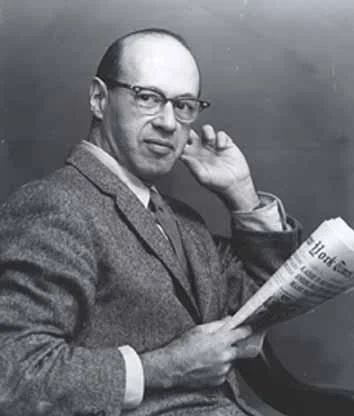Joseph Hirsch
(1910- 1981)
'I believe that some day the fabric of art will be threaded with morality, enabling us to distinguish evil from good. Today, this is unthinkable, in the delightful art world where, excepting censorship, anything goes. But anything goes does not accord with the more discriminating ethics of our civilized code which rules out what is socially destructive.''
Joseph Hirsch was a major artist who felt that "any painting that has to do with life is a commemoration." This belief likely stemmed from his military background, where he created war posters which captured troops in the battlefield. He was a founding member of advocacy group Artists Equity, a group denounced as Communist by the government in the 50's. Hirsch would persist onward, his art living in the many major collections to this day.
Notable Exhibitions
Museum of Modern Art (MoMA), New York – Americans 1942: 18 Artists from
9 States showcased 17 of his paintings, marking his national breakthrough.
Pennsylvania Academy of the Fine Arts, Philadelphia – Regular participant
in annual exhibitions; also awarded early prizes here.
National Academy of Design, New York – Frequent exhibitor; recognized
with the Hall Garten and Altman Prizes.
Carnegie Museum of Art, Pittsburgh – Exhibited in the Carnegie Internationals;
won both second and full Carnegie Prizes for his paintings.
Art Institute of Chicago, Chicago – Displayed in annual exhibitions; received the
Blair Prize for Nine Men.
Metropolitan Museum of Art, New York – Exhibited in annual shows,
winning Fourth Prize for Nine Men.
Israel Museum, Jerusalem – Hosted The Poetry of Sight (2024–25), highlighting
his mastery of pen and wash.
Notable Awards
Joseph Pennell Purchase Prize (Library of Congress, 1944 & 1945) – Won twice for his prints Lunch Hour and The Confidence.
Guggenheim Fellowship (1942, 1943) – Two consecutive fellowships for artistic achievement.
Fulbright Fellowship (1949, 1950) – Supported teaching and painting abroad.
Carnegie Second Prize (Carnegie Museum of Art, 1947) – Awarded for The Iceman.
Blair Prize (Art Institute of Chicago, 1951) – Received for his painting Nine Men.
Metropolitan Museum of Art Fourth Prize (1951) – Also for Nine Men.
Childe Hassam Purchase Fund (American Academy of Arts & Letters, 1955, 1961, 1962, 1963) – Multiple works purchased for museum collections.
Altman Prize (National Academy of Design, 1959, 1967, 1978) – Won three times for outstanding figure painting.
Carnegie Prize (Carnegie Museum of Art, 1968) – Top honor at the Carnegie International for painting.

